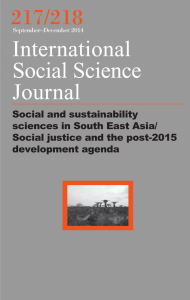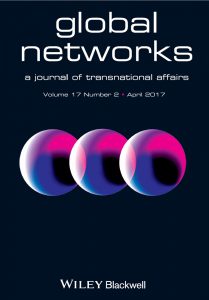The Social Construction of Scientific Knowledge: The New AAP Policy on Male Circumcision
The American Academy of Pediatrics (AAP) recently released a revised policy statement regarding male circumcision. Unlike previous policies on the issue, this one got a lot of media attention, probably because male circumcision itself has been in the news more than usual. The past few years have seen increasing mobilization against male circumcision (for example, intactivists (the term activists fighting for genital integrity have given themselves) tried to ban the practice in the city of San Francisco last year, though the attempt was unsuccessful). And the surgery gained some global attention this year after a German court ruled that it constituted grievous bodily harm against a minor. Many national governments and religious groups/leaders spoke out against the court ruling, the court’s decision has caused many to think a bit more about neonatal circumcision.
This is the context in which the AAP released its new policy. While its actual recommendations and findings are interesting, I am particularly intrigued by the new methodology of the literature review that forms the policy’s foundation. The AAP policy in 1999 derived from a literature review of the available studies on circumcision—its risks, benefits, complication rates, and even a little bit of the ethics surrounding the procedure. The new statement does the same thing, and though it covers more topics (for example, there has been a lot of recent research about circumcision as a possible HIV preventative, which was not part of the 1999 review), it explicitly limits the scope of the literature review in a new way.
This year’s policy draws only on English-language, peer-reviewed, scientific articles; specifically, it includes “all meta-analyses; all randomized controlled trials; and all case-control, prospective and retrospective cohort, and cross-sectional studies…Case reports, case series, ecological studies, reviews, and opinions were excluded from the review” (e761). Additionally, literature was rated “using the American Heart Association’s template for evidence evaluation” (e761); articles rated as excellent, good, fair, or poor were included, while anything deemed “unsatisfactory” was excluded. In 1999, the AAP did not explicitly delimit the scope of the literature review. In fact, it drew some of its conclusions from surveys and case reports, evidence which would now either be totally excluded or carry less weight.
I appreciate that the AAP now makes the scope of the literature review explicit. In any research, we make determinations about what to include or exclude; it is important to be clear about how you arrived at particular conclusions, and part of being clear is defining how you select your sources. However, I also see something problematic in this schema. By narrowing the focus to a specific subset of scientific studies, the AAP is making a statement about what counts as objective, scientific evidence or what counts as expert knowledge on the topic of circumcision. Specifically, it establishes “male circumcision” solidly in the realm of Western science, knowable only through a positivist, medical lens. While it is very important to establish medical, scientific evidence about certain risk, benefits, complications, and methods of circumcision, circumcision is always already a cultural practice. This is true when it is done for clearly religious or cultural reasons, AND when it is done in a routine, medical setting. By excluding research that does not meet the narrowly defined evidence evaluation guidelines, the Task Force cannot adequately assess the many dimensions of the practice.
In fact, much of the public debate surrounding circumcision has little to do with the science of circumcision; rather, it involves philosophical claims about the integrity of the body and the centrality of human rights, the roles of religion and identity in people’s lives, the value of tradition and technology. Even the science of circumcision as a medical practice is inextricably tied to social issues—the desire to discipline and control the body, the aesthetics (rooted in specific ideals about the gendered body) that inevitably weave themselves into surgical procedures (like the surgeries to “correct” “abnormal” genitalia). By giving the literature review the veneer of objectivity and scientific authority, the AAP insulates the policy from the complexity of real life, where circumcision’s purported health benefits clash with human values and sexualities, where circumcision’s purported risks intermingle with religious identities and economic realities. When it comes to penises (and genitals more generally), things are messy, and that is ok. It’s about time that doctors, and their professional associations, come to terms with the mess.
Further Reading





Very interesting. I annotate the policy here http://tinyurl.com/aapanno .
Its faults began well before the taskforce set the criteria of its literature search. It was a taskforce “on circumcision” and that was its focus and its goal. A taskforce “on infant male urogenital health” would have looked first at the foreskin in its context as a protective and later erogenous organ, an integral part of the male genitalia, then at what pathologies it is subject to and how they are best treated, with circumcision as a last resort, and cultural circumcision only as a medical curiosity.
All of the taskforce were culturally biased towards circumcision, with probably not a foreskin-owner among them. One has said
“I circumcised [my son] myself on my parents’ kitchen table on the eighth day of his life. But I did it for religious, not medical reasons. I did it because I had 3,000 years of ancestors looking over my shoulder.”
So it is hardly surprising that everything in the policy is loaded towards circumcising, and pushing parents towards deciding to circumcise.
Their literature search had some notable failures: it does not, for example, cite Taylor’s groundbreaking 1996 paper, “The prepuce: Specialized mucosa of the penis and its loss to circumcision” that details the structure of the highly innervated ridged band. While it does cite a study showing that “circumcision ablates [removes] the most sensitive part of the penis” and another reporting a marked worsening in overall sex life (6% better vs. 20% worse), it ignores both those findings. It dismisses major complications and death from circumcision because it did not find any statistical studies of them. It discusses the action of the Mogen circumcision clamp without mentioning that the clamp has caused too much of several boys’ penises to be cut off; lawsuits have driven the company out of business.
Little surprise then, that they claim “benefits of circumcision outweigh the risks” when they never actually weighed them in any numerical way.
In 2010, the AAP unveiled a new Female Genital Cutting policy in which it wanted to allow a token ritual nick to girls (“much less extensive than neonatal male genital cutting”) but the howls of protest made them back down within a month. It is now a month since it released its circumcision policy …
Here’s the link to “The Circumcision of Benjamin” http://www.flickr.com/photos/87694191@N07/sets/72157631638325100/